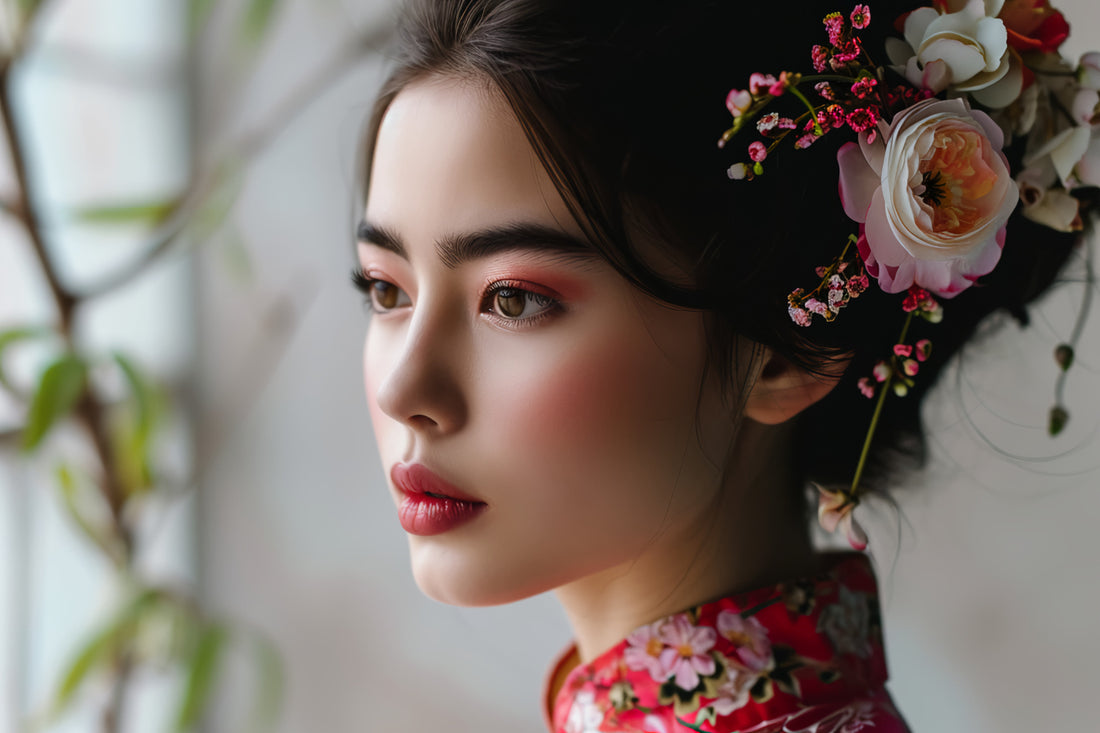
Celebrating Lunar New Year: Traditions, Customs, and Global Impact
Share
What is Lunar New Year?
Lunar New Year, one of the most significant and widely celebrated festivals in the world, marks the beginning of the lunar calendar year. The holiday is celebrated by millions of people across Asia, and its influence can be felt globally, with festivities in cities around the world. From vibrant parades to delicious feasts, Lunar New Year is filled with age-old traditions, rich symbolism, and cultural customs that have been passed down through generations.
Whether you call it Chinese New Year, Tết, Seollal, or another name depending on where you are in the world, Lunar New Year is an opportunity to reflect on the past, celebrate with loved ones, and set intentions for the year ahead. In this blog, we’ll explore the history, customs, traditions, and global impact of Lunar New Year, giving you insight into why this holiday is so special.
Lunar New Year is celebrated on the first day of the lunar calendar, which usually falls between January 21 and February 20. It marks the end of winter and the beginning of spring, symbolizing a fresh start and renewal. The celebration is based on the cycles of the moon, with each year being associated with one of the twelve Chinese zodiac animals. The Chinese zodiac plays an important role in the festivities, with each animal representing a specific year in a 12-year cycle.
While the holiday is most famously associated with Chinese culture, it is also observed in several other countries in Asia, including Vietnam, Korea, and Mongolia, each with its own unique customs and traditions.
Explore Korean Skincare on AgelessBeauty3000.com
The History and Origins of Lunar New Year
The origins of Lunar New Year can be traced back over 4,000 years to the ancient Chinese dynasties. According to Chinese mythology, the holiday began with the story of Nian, a mythical beast that would terrorize villages at the beginning of the lunar year. To ward off the creature, villagers would light firecrackers, decorate their homes with red symbols, and wear bright colors to scare Nian away. Over time, these customs evolved into the vibrant, lively celebrations that are now associated with Lunar New Year.
The significance of Lunar New Year was further cemented during the Qin Dynasty (221–206 BC), when the Emperor established the first day of the lunar calendar as an official holiday. Since then, Lunar New Year has been celebrated as a time to honor ancestors, celebrate family, and wish for prosperity and good fortune in the coming year.
Lunar New Year Around the World
Though Lunar New Year is most commonly associated with China, many countries and cultures across Asia have their own unique way of celebrating. Here’s a look at how different countries observe this important holiday.
Chinese New Year
Chinese New Year, also known as Spring Festival (Chun Jie), is the most widely recognized version of Lunar New Year. The celebrations last up to 15 days and culminate in the Lantern Festival. During this time, families reunite, feast on traditional dishes, exchange red envelopes filled with money, and honor their ancestors with offerings. Key symbols include red lanterns, firecrackers, and the lion dance.
In major cities around the world, Chinese New Year is marked by large-scale parades, dragon dances, and cultural performances. These celebrations are an opportunity for people to connect with their cultural heritage while sharing the joy of the holiday with others.
Vietnamese Tết
In Vietnam, Lunar New Year is known as Tết Nguyên Đán, or simply Tết. It is the most important celebration in Vietnamese culture. The holiday marks the arrival of spring and is celebrated with family reunions, feasts, and prayers for ancestors. Tết is also a time for giving gifts and money, symbolizing prosperity and good fortune for the year ahead.
Traditional foods include bánh chưng (square sticky rice cakes), pickled onions, and boiled chicken, all of which hold cultural and symbolic meaning. In addition to celebrating with family, many people clean their homes before Tết to drive away bad luck and make way for good fortune.
Korean Seollal
Korean Lunar New Year, known as Seollal, is another vibrant celebration that involves honoring ancestors and participating in traditional customs. During Seollal, families gather to pay respects to their ancestors through a ritual called “charye,” where offerings of food and drink are made to honor the spirits of the departed.
Korean New Year is also associated with playing traditional games, such as yutnori (a board game) and eating special foods like tteokguk (rice cake soup), which symbolizes the passage into a new year and the gaining of another year of age.
Mongolian Tsagaan Sar
In Mongolia, Lunar New Year is celebrated as Tsagaan Sar, a festival that marks the end of winter and the start of a new year. The holiday is characterized by family gatherings, the exchange of gifts, and the consumption of mutton, dairy products, and traditional bread.
Tsagaan Sar also involves rituals to ensure good health and prosperity for the year ahead, such as lighting incense and offering prayers to spirits. The holiday is deeply rooted in Mongolian culture and is a time for honoring elders and celebrating the bond between family members.
Symbolism of Lunar New Year
Lunar New Year is rich in symbolism, with various customs and traditions meant to usher in good luck, prosperity, and happiness for the year ahead. Here are some key symbols and their meanings:
Red and Gold
Red and gold are the predominant colors of Lunar New Year celebrations. Red symbolizes luck, joy, and happiness, while gold represents wealth and prosperity. These colors are seen in decorations, clothing, envelopes, and gifts throughout the holiday season. Red lanterns, banners, and couplets with auspicious phrases are commonly displayed in homes and public spaces.
The Chinese Zodiac
The Chinese zodiac is an integral part of Lunar New Year celebrations. Each year is associated with one of the 12 animals of the zodiac, and each animal represents different characteristics and fortunes. The zodiac animals include the Rat, Ox, Tiger, Rabbit, Dragon, Snake, Horse, Goat, Monkey, Rooster, Dog, and Pig. The zodiac signs play a key role in predicting the luck and fortune of individuals born in that year.
Check out our Glass Skin on a Budget Collection.
Firecrackers and Lanterns
Firecrackers and lanterns are traditional symbols of Lunar New Year celebrations. Firecrackers are believed to ward off evil spirits and bring good luck for the year ahead. The bright lights of lanterns symbolize the hope for a bright future, and lantern festivals are a popular way to close the celebrations, where people release colorful lanterns into the sky.
Red Envelopes (Ang Pao / Li Xi)
Red envelopes, known as “ang pao” in Chinese, “li xi” in Vietnamese, or “sae-bae don” in Korean, are a traditional gift exchanged during Lunar New Year. These envelopes, filled with money, are given to children, unmarried adults, and sometimes employees as a token of good luck and prosperity. The amount of money inside is not as important as the gesture itself, which symbolizes the passing on of blessings for the year ahead.
Delicious Foods of Lunar New Year
Food plays a central role in Lunar New Year celebrations, with each dish having specific meanings tied to prosperity, longevity, and good fortune. Here are some traditional foods enjoyed during the festivities:
Dumplings
In China, dumplings (jiaozi) are a must-have dish during Lunar New Year. Shaped like ancient Chinese gold ingots, dumplings symbolize wealth and prosperity. It’s traditional to make a large batch of dumplings with family and friends, with some hidden inside a coin or other small item. The person who finds the hidden item is believed to have good luck for the year.
Bánh Chưng
In Vietnam, bánh chưng (square sticky rice cakes) are an important food during Tết. Made with sticky rice, mung beans, and pork, the cakes are wrapped in banana leaves and symbolize the Earth. They are often prepared as a family activity and given to relatives as a gesture of love and respect.
Tteokguk
In Korea, tteokguk (rice cake soup) is a traditional dish eaten during Seollal. The soup contains thin slices of rice cake, which symbolize the passage of time and gaining another year of age. Eating the soup is thought to bring good luck and prosperity.
Noodles
Long noodles are symbolic of longevity in many Lunar New Year traditions. In both Chinese and Vietnamese cultures, noodles are often served during the holiday as a wish for a long, healthy life.
Global Impact of Lunar New Year
Lunar New Year is not only celebrated in Asia but has also become an important cultural event in cities worldwide. Major cities such as New York, London, Paris, and Sydney host elaborate Lunar New Year festivals, complete with dragon dances, food markets, and cultural performances. These global celebrations provide an opportunity for people of all backgrounds to learn about and appreciate the rich traditions of the holiday.
As the world becomes more interconnected, Lunar New Year has gained recognition beyond traditional Asian communities. It is now celebrated by people from diverse backgrounds, and the cultural exchange that takes place during the holiday is a testament to the universal appeal of the festival. In addition, the global visibility of Lunar New Year has encouraged businesses to incorporate the holiday into their marketing campaigns, with special sales, events, and promotions aimed at reaching a wide audience.
Conclusion
Lunar New Year is a celebration that transcends borders, bringing together people from different cultures to honor the past and welcome the future. With its rich history, vibrant traditions, and meaningful symbols, the holiday serves as a reminder of the importance of family, renewal, and hope. Whether you celebrate with a festive feast, a family gathering, or by attending a public parade, Lunar New Year offers an opportunity for joy, reflection, and connection.
As this ancient festival continues to spread across the globe, its cultural significance grows stronger, fostering a deeper appreciation for the customs and traditions that make the celebration so special. Whether you are participating in the festivities or simply enjoying the beauty of the holiday from afar, Lunar New Year remains a timeless occasion that unites people worldwide in a celebration of new beginnings, prosperity, and happiness.
Explore Korean Skincare on AgelessBeauty3000.com
